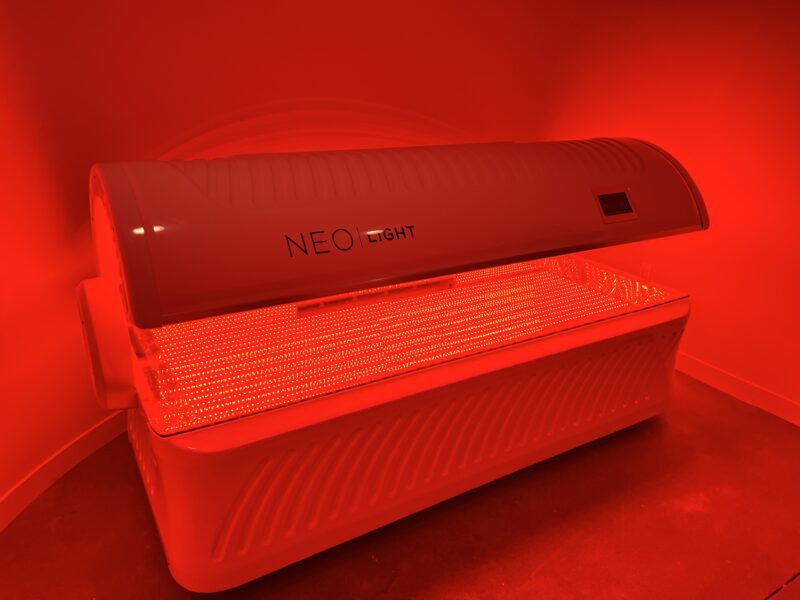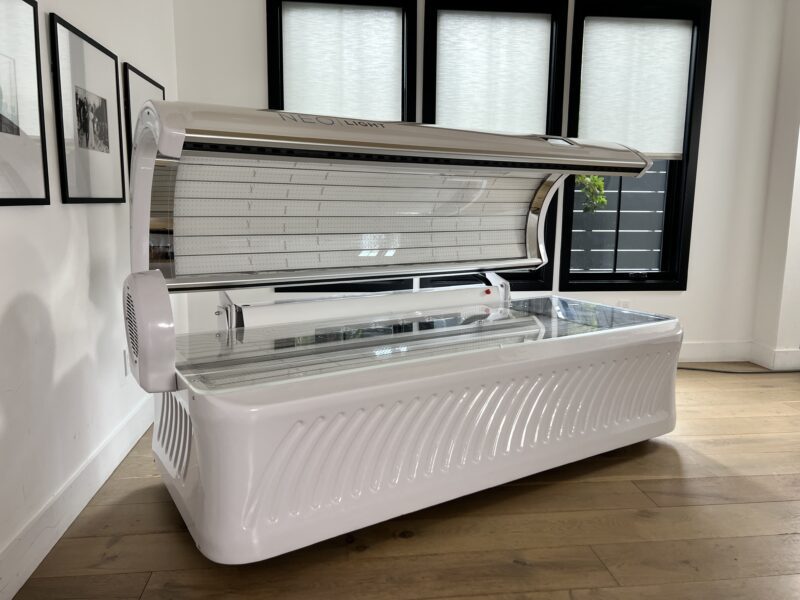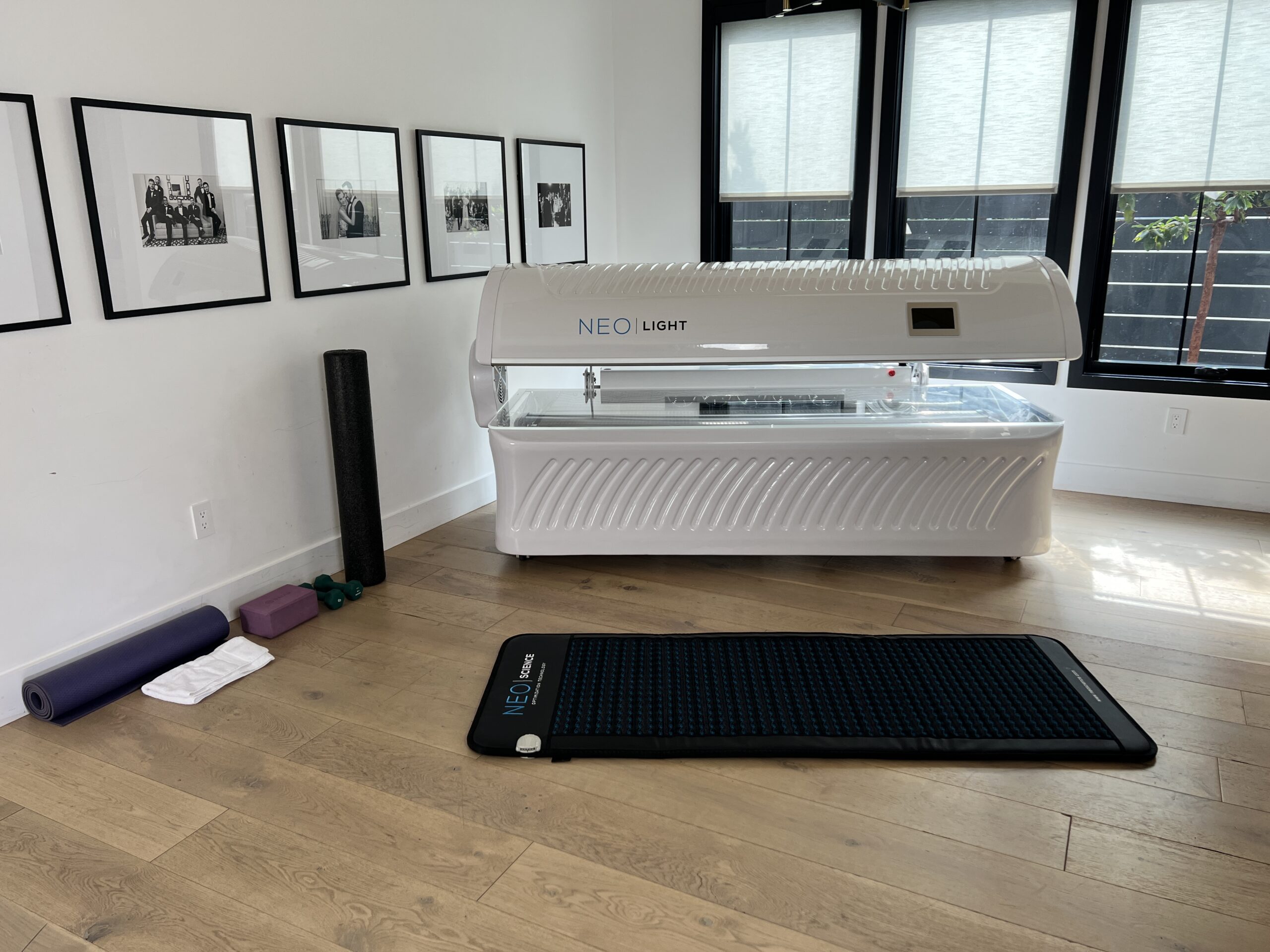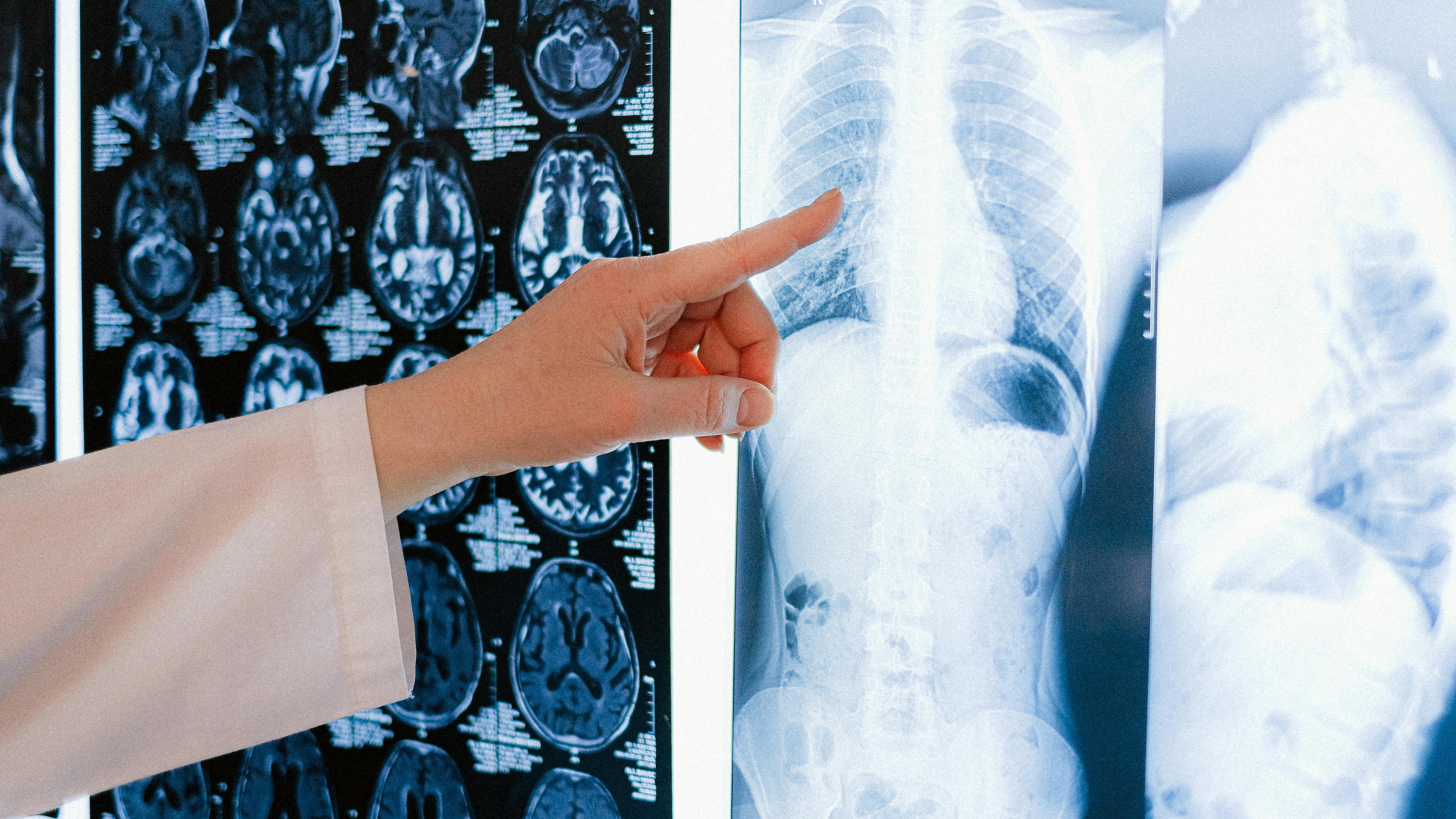Aging gracefully is not only possible, but it can be empowering—and best of all, it doesn’t have to require invasive surgeries or intense medical interventions. In my approach to personal and client well-being, I like to take the holistic path, exploring options that nurture and support the mind, body, and soul.
There are several effective, non-invasive therapies that can help you age gracefully by encouraging cellular health.
For example, Low-Level Laser Therapy (LLLT) uses red or near-infrared (NIR) light waves to activate and repair cells, stimulate collagen, and reduce inflammation. By promoting mitochondrial function, LLLT helps cells generate more energy, ultimately supporting overall tissue health. Pulsed Electromagnetic Field (PEMF) therapy works by using electromagnetic fields to rejuvenate and repair cells, encouraging circulation and reducing inflammation.
On the journey to health and vibrancy, one might also consider infrared sauna, cryotherapy, nutritional supplementation, meditation and mindfulness, wearable health tech, or one of my favorites, light therapy!
Unveiling the Power of Light Therapy
Light therapy, including both red and near-infrared (NIR) light, stands out as a remarkably versatile tool for promoting tissue repair, supporting healthy skin, and best of all, enhancing mitochondrial health!
The depth of infrared wavelengths— particularly 810, 850, and 940 nanometers-makes them effective in enhancing mitochondrial function, especially by stimulating a key enzyme called cytochrome c oxidase. This activation boosts the production of adenosine triphosphate (ATP), a nucleotide that serves as a primary energy carrier in all living cells necessary for cells to repair, regenerate and thrive.
During a light therapy session, the skin absorbs low-level light, which activates cellular processes and ATP production. This results in reduced oxidative stress, improved circulation, and increased collagen production.
With consistent light therapy, typically 3-5 sessions a week, many people notice these diverse benefits:
- Skin Health: Red light may improve skin texture and reduce fine lines and acne scars.
- Joint Pain and Inflammation: Both red and infrared light have shown to alleviate joint discomfort and improve mobility.
- Muscle Recovery: Many athletes and fitness enthusiasts turn to red and infrared light therapy as a gentle way to support muscle recovery after challenging workouts or injuries.
- Mood Enhancement: Studies suggest red light may support serotonin production, which helps improve mood and reduces anxiety.
- Hair Growth: Red light may stimulate blood flow to hair follicles, encouraging healthy hair growth.
- Sleep Optimization: Red light therapy can work directly with our body’s natural biology to promote relaxation, enhance melatonin production, and encourage a more restful night’s sleep.

The Science of Healing Light
Research supports the benefits of light therapy, also known as photobiomodulation (PBM), for slowing the effects of aging and managing cellular health. For instance, a study by the University of Wisconsin-Milwaukee highlights how near-infrared LED therapy enhances mitochondrial function, supporting tissue repair and managing inflammation.
This study’s insights into photobiomodulation—particularly the use of red to near-infrared light—powerfully align with the therapeutic potential of the NEO Light Bed. The device, created by NEO Science, which delivers red and near-infrared wavelengths through low-level light therapy, works to stimulate cellular repair and enhance mitochondrial function, mirroring the mechanisms described in the study.
Let’s delve deeper into the relationship:
- Mitochondrial Activation: The study highlights that red to near-infrared light (specifically within 630-1000 nm) activates mitochondrial cytochrome c oxidase. Cytochrome c oxidase plays a critical role in cellular energy production by facilitating the transfer of electrons in the mitochondria, boosting ATP synthesis and cellular energy output. The NEO Light Bed uses precisely these wavelengths to target mitochondria, enhancing cellular energy production and recovery. This is particularly relevant in tissues where mitochondrial activity is compromised, making the light bed a supportive therapy for recovery, regeneration, and disease prevention.
- Wound Healing and Recovery: Evidence from this study reveals that red to near-infrared light can enhance wound healing and improve recovery from ischemic injuries (e.g., injuries due to restricted blood flow). These benefits occur due to the light’s ability to upregulate genes linked to healing and mitochondrial health. NEO Light Bed users may experience similar healing benefits, as the bed’s photobiomodulation effects have the potential to accelerate tissue repair, improve circulation, and support regeneration in damaged or aging cells.
- Reduction of Cellular Degeneration: The study also mentions the positive impact of red to near-infrared light on optic nerve degeneration and its therapeutic effects on conditions involving mitochondrial dysfunction (e.g., Parkinson’s disease and age-related macular degeneration). Given that many degenerative diseases are linked to mitochondrial damage and oxidative stress, the NEO Light Bed could offer supportive care to reduce cellular degeneration by protecting and enhancing mitochondrial function in these vulnerable tissues.
- Antioxidant and Anti-inflammatory Actions: The research documents increased gene expression in pathways related to mitochondrial energy and antioxidant defense. This is key because oxidative stress is often a root cause of tissue injury and inflammation. The NEO Light Bed’s red and near-infrared light capabilities may upregulate antioxidant pathways, reducing inflammation, and promoting cellular resilience against stressors. This can be especially beneficial for conditions with an inflammatory or oxidative component, potentially including chronic pain, arthritis, or inflammatory skin issues.
- Applications to Chronic and Degenerative Diseases: The study highlights the broader applications of near-infrared photobiomodulation in treating conditions linked to mitochondrial dysfunction, such as diabetic retinopathy, macular degeneration, and Parkinson’s disease. The NEO Light Bed, with its near-infrared spectrum, holds the potential to be a non-invasive tool for people seeking to manage or mitigate the effects of such diseases. By boosting mitochondrial function and cellular energy, it may enhance overall cellular resilience and health, offering therapeutic support for chronic, degenerative conditions.

The NEO Light Bed: Essential to Our Family’s Wellness Routine
It is absolutely possible to heal from within, but that doesn’t mean that there is no need to seek out support!
The NEO Light Bed has become an essential part of our family’s wellness routine, especially for my mother, who was diagnosed with ALS. Regular sessions have significantly improved her sleep quality and provided a calming effect on her nervous system. The RESTORE mode, which combines red and infrared light, supports muscle relaxation and enhances mitochondrial health, promoting cellular energy at a foundational level. This boost in mitochondrial activity is increasingly supported by science, particularly for overall neurological health. Seeing her feel more at ease and supported in her well-being has been invaluable.
Personally, I’ve experienced noticeable benefits from all four settings, with a particular focus on the RESTORE (red light) and CALM (green light) modes. The RESTORE mode has been instrumental in enhancing my skin health and rejuvenation, while the CALM mode provides a soothing experience that helps reduce stress and promote relaxation. The NEO Light Bed’s thoughtful, science-backed design truly feels like a blessed investment in our quality of life.
by





